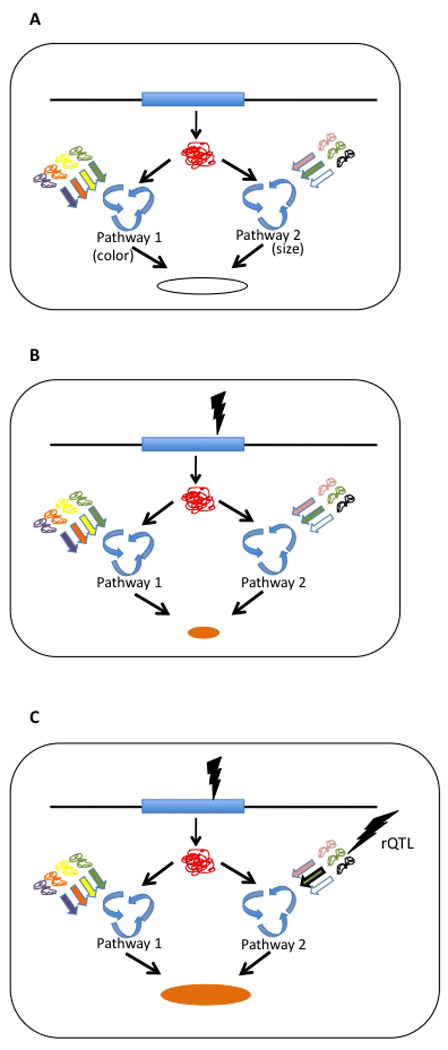Figure 2.

Mechanistic model for the appearance of rQTL-type variation in pleiotropy. A) The single gene product is involved in two pathways, in this example determining the color and the growth (size) of the yeast colony. There is no genetic variation (“wildtype”). The resulting colony is white and large. B) A mutation happens at the pleiotropic locus that affects both pathways, resulting in a change in both traits: the phenotype is a slow-growing, orange colony. C) A compensatory mutation occurs in one of the pathways, affecting the result of one, but not another pathway. The colony hence manifests mutated color, but “wildtype” growth rate (it is not necessarily a fully compensating mutation, but it causes variation that is independent of the other trait).
